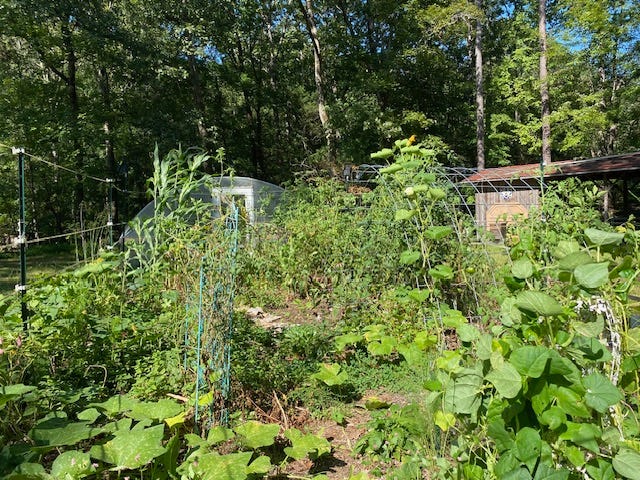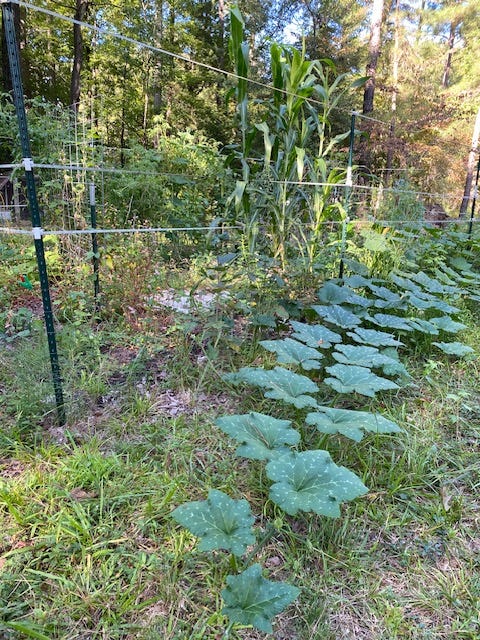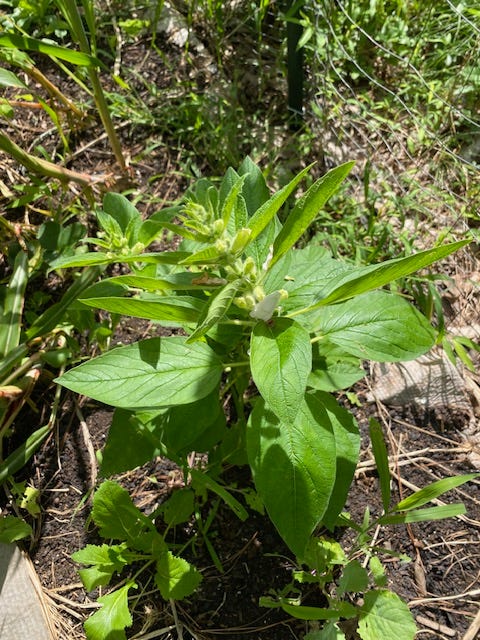Intro to plant guilds
Set plants up for success by creating mutually beneficial companion plant selections.
Planting guilds, groups of different plant species that support each other, help to maximize yields and growing spaces. By creating your own plant guilds you not only get the most out of your plants and gardens, but also align your values and intentions with plant pairings.
Pair plants that benefit each other
A common plant pairing is carrots with tomatoes. The logic behind this pair is that carrots repel damaging tomato pests, help aerate the soil so that tomato plant roots thrive, and the tomatoes create shade for the cool-loving carrots. The problem with this pair is climate. In my area of North Carolina, we rarely experience conditions where a tomato plant will be in full foliage when carrots haven’t already bolted and gone to seed. This doesn’t mean that one should abandon the pairing, but it helps to shift expectations and introduce other plants to form a guild.

Plant choice and value alignment
Creating your own planting guilds could anchor on the growing space and your goals. Shady or sunny area, rocky or sandy soil, high winds, consistently wet soil – observe the space to narrow down the list of plants that would thrive there. Is food production the main goal? Or wildlife food production (pollen-bearing plants)? Are there spaces in the landscape you’d like to see year-round color? Or do you need to create privacy? The growing conditions and goals will change the plants you choose.
Design your own plant guild
When plant guilds and companion planting come up in conversation, people often ask me what they should do. There’s no prescription. Based on all the variables, you get to decide which guild(s) work for you. A historic guild can provide inspiration for creating others. For example, the Native Americans had a guild of corn, beans, and squash. Corn provides trellising for beans, beans provide nitrogen for nitrogen-heavy corn growth and squash foliage, and squash provide ground cover to prevent moisture loss around the plants. What if you swapped out a few similarly-growing plants? Tall stalks of sorghum could be trellises for southern peas, and watermelon could provide ground cover instead of squash.

A permaculture mindset involves designing spaces that mimic nature in a nourishing cycle. Another guild method can focus on successions. For example, cold-loving snap peas need trellising and they return nitrogen to the soil. When temperatures start to warm up and peas are close to reaching maturity, one could plant heat-loving and nitrogen-loving plants that require trellising in their place. Malabar spinach is one example. Although the growing times will overlap briefly, these plants could be part of a successive guild. Maybe the trellis covered in Malabar spinach foliage casts shade on an area that could be seeded with carrots during the shoulder season, which gives the carrots time to get established before the spinach dies off.
Create your own guilds
Observe the environment.
Define your growing goals.
For every plant, choose 2 more to grow with or in succession of the plant.
Local beekeeper friends have a practice of adding a seed or plant each time they harvest a plant from their garden. Harvesting carrots? Drop a few beans in. Removing tomatoes for the season? Plant kale or spinach in their place. It’s a great habit-stacking method so that you always have something growing. With succession guilds, you could sow the beans shortly before carrot harvest, and seed kale or spinach in tomatoes’ shade a few weeks before tomatoes will die off in the first frost. With this approach, plants have overlapping time to support each other while they get established.

Some guilds I’ve developed in my growing spaces:
Fruit trees, garlic, snap peas, bee balm, fennel.
Peas, carrots, arugula.
Borage, tomatoes, parsley, buckwheat.
Peppers, bush beans, melon.
Sorghum, sesame, strawberries.
I encourage you to create your own guilds based on your unique growing spaces and goals. For more inspiration, check out guild examples from Plants For a Future.



